After the worst fire season on record, groundbreaking restoration projects work
to help Cuyamaca Rancho State Park flourish once again.
By Michelle Johnson
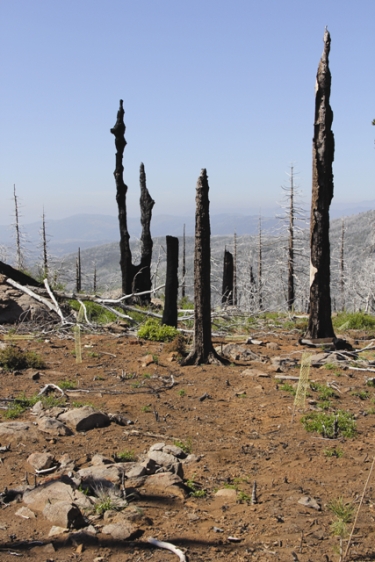
Southern California is no stranger to wildfire. Year after year, the area prepares itself for another fire season, which begins in late summer and runs through the fall. It is during this time that the infamous Santa Ana winds make their way across the hot, dry deserts that border the region to the east, bringing with them the strength to ignite the highly flammable shrub land — known as chaparral — that dominates the landscape.
In October 2003, Southern California experienced one of the worst fire seasons on record with 15 fires — now known to many as the 2003 Firestorm, the worst fire disaster in the state’s history — occurring in Los Angeles, Riverside, San Bernardino and San Diego Counties that quickly escalated, decimating swaths of the region’s forests and shrub lands. The fires ripped through hundreds of thousands of acres of forestland, toppling thousands of nearby homes and other structures and taking at least 16 lives.
The Cedar Fire, the largest of the 15 fires, began on October 25 when a hiker lost in Cleveland National Forest sparked a fire in a desperate attempt to be rescued. In just 14 hours, what started as a relatively small blaze quickly swelled into a 28-mile-long conflagration, driven by the destructive power of the seasonal Santa Ana winds, and crossed into Cuyamaca Rancho State Park.
BEFORE THE FIRE
During the early 1800s, following on the heels of the Spanish government, the Mexican government encouraged the settlement of the area known today as California by granting large plots of land called ranchos, from which the English ranch is derived. The ranchos were tended to by Californian Native Americans and former mission residents and were mainly used to raise cattle and sheep.
In 1845, Agustin Olvera of Los Angeles was granted Rancho Cuyamaca, a 35,501-acre plot, by the Mexican government. He intended to harvest timber, but his contractor, Cesario Walker, abandoned the land because of fear of the native tribes. In 1869, the discovery of gold in the town of Julian prompted a rush to the Cuyamaca Mountains. Stonewall Mine, the most profitable mine in the mountain range located south of Laguna Cuyamaca, was purchased and expanded by Robert W. Waterman, the soon-to-be governor of California. After Waterman’s death in 1891, financial problems plagued the mining community of Cuyamaca City, and mining operations came to a close in 1906. Cuyamaca City continued for many years as a mountain resort.
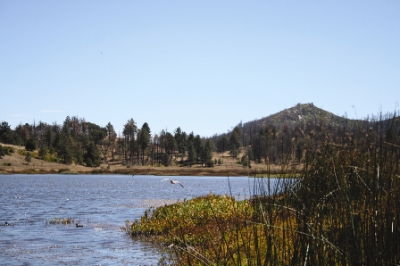
Then, in 1923, capitalist Ralph M. Dyar bought Rancho Cuyamaca with the help of his business partners, planning to develop a lakefront resort on the northern half of the property. Dyar built a home for his family on the property, using stone and salvaged materials from the nearby Stonewall Mine ruins. The Dyar house later served as park headquarters for Cuyamaca and a visitor center before it was destroyed in the Cedar Fire.
In 1928, the first State Park Bond Act was passed, paving the way for California to purchase private lands to use as public state park land. Then, in 1933, just 10 years after purchasing the rancho, Dyar’s plans to develop the property came to halt as a result of the Great Depression, and he decided to sell the land to California for its state park system. What’s more, the new Cuyamaca Rancho State Park benefited from the placement of two Civilian Conservation Corps (CCC) camps that provided the park designers with CCC labor to construct the park’s initial facilities, including many of the trails and campgrounds seen at the park today.
The now 25,000-acre Cuyamaca Rancho State Park is located just 40 miles east of San Diego in the Peninsular Ranges and is home to some of California’s best outdoor recreation and a wide variety of plant and animal species. Located within the park is the 6,512-foot Cuyamaca Peak, San Diego County’s second highest point. Of the more than 100 miles of Cuyamaca’s hiking trails, the 3.5-mile hike up Lookout Fire Road to the peak is a favorite among visitors. From this point, park visitors can view Anza-Borrego State Park to the east and the Pacific coastline to the west. Along the hiking trails visitors are treated to a beautiful array of wildflowers, including peonies, California fuchsia and Southern pink dogwood. Cuyamaca provides more than one million visitors each year with camping and picnicking facilities, horse trails and corrals, and Lake Cuyamaca gives a much-needed respite from the hot California sun. More than half of the park’s acreage is designated as state wilderness, providing the area with strict protection of its natural resources and wildlife, including more than 100 species of the local bird population, like woodpeckers, red-tailed hawks and sage sparrows, and mammals, like mountain lions and badgers — all of which depend on Cuyamaca’s forests for food and shelter.
THE DESTRUCTION

The signal lit by the lost hiker quickly burned out of control, becoming the biggest wildfire in California’s recorded history. The Cedar Fire burned for nearly two weeks before being contained. It denuded more than 95 percent of Cuyamaca’s 25,000 acres. In total, the fire destroyed roughly 2,800 buildings, of which 2,300 were homes, and burned more than 280,000 acres of California’s forestland, including acreage in Cleveland National Forest.
Initially, park officials planned to let the natural regeneration of plant life take place. Fire is actually an important factor in the regeneration process of many of the area’s tree species. In fact, early accounts of the native Kumeyaay people, a Native American group living in the southwestern areas of California and extending south into Baja, Mexico, suggest that they burned the chaparral every seven to eight years to increase the yearly plant growth. The chaparral ecosystem is generally able to recover quickly from fire. Many of the plants in the park, including a large portion of chaparral plant species, have adapted to survive under these harsh, dry conditions. Oftentimes, tall, dense communities of chaparral species become too large, making passage difficult for large animal species. These dense plant communities also keep smaller chaparral species from receiving sunlight. After a fire, these understory plants — known as fire followers — are able to flourish again until the overstory regrows. Then, the seeds of these plants lay dormant until the next fire creates conditions that can bring them back to life.
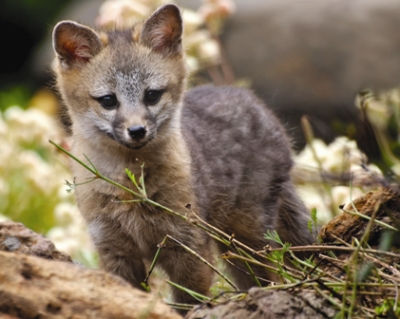
The forests of Cuyamaca, however, were not able to withstand the intensity of the Cedar Fire, which made natural regeneration nearly impossible. The loss of these forests has greatly affected the entire ecosystem, causing greater soil erosion, releasing stored carbon back into the atmosphere and wiping out important wildlife habitat that supports species like California mountain lions, bobcats and coyotes. These factors have also had negative effects on the air and water quality in the area. Non-native plant species, including shrubs and grasses, have taken advantage of these altered conditions and are quickly taking over. The non-native species take much-needed resources, like water and sunlight, that the native species struggle to obtain, making regeneration all the more challenging.
California State Park officials soon recognized the need for more immediate action to speed up the forest recovery process, and developed a recovery project for Cuyamaca Rancho State Park. The project aims to reestablish patches of landscape with native conifer trees that will aide reforestation on burned acreage throughout the park. More than simply planting trees, this project also incorporates education programs to address the causes of wildfires and how to prevent them. In addition, the project will bring greater attention to the many benefits forests provide — especially their ability to store carbon — by highlighting the drastic effects the loss of forest cover has had on the local environment, including increased soil erosion and decreased air and water quality.
REBUILDING
In March 2008, three initial test sites were planted using a mix of roughly 80 percent Jeffrey pine, 15 percent Coulter pine and five percent incense cedar, the original species burned in the Cedar Fire. American Forests was instrumental during this pilot project, planting roughly 9,000 seedlings in two plots of about 25 acres, incorporating a random planting pattern to mimic the healthy tree stands seen in the park before the Cedar Fire. The mix of species and spacing are designed to recreate historically healthy stands over time. The project used data collected from graduate students at San Diego State University to target planting areas based on soil conditions to strategically position seedlings in such a way that would offer future seed sources for natural succession.
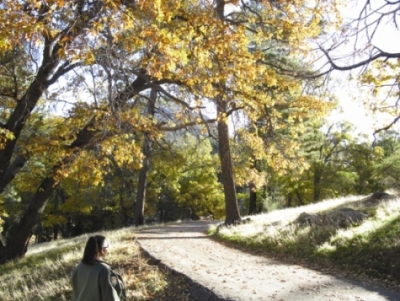
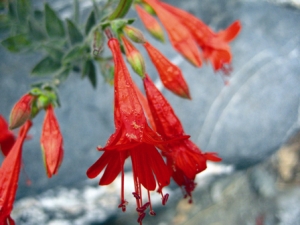
Following the success of the initial plantings, 2009 marked the beginning of the first of four planting phases of the reforestation project. The planting of conifer seedlings expanded to cover 256 acres, then again to 331 acres, with American Forests planting an additional 78,000 seedlings in 2009 and 2010.
The University of California, Santa Barbara is conducting a research project to continue monitoring the planting and analyze collected data to determine how the plantings are acclimating to the environment. Every two years, they will monitor the reforestation work and collect data to determine the impacts of regional climate change and the recovery of vegetative cover. So far, park officials have seen a promising amount of early forest regeneration, especially with native conifer species making a comeback. Officials estimate the trees planted will sequester more than 47,000 tons of carbon dioxide in the first 10 years.
Prior to the Cedar Fire, Cuyamaca’s forests consisted of coniferous and hardwood species. These were replaced mostly with ceanothus, a non-native and highly undesirable groundcover species. Without efforts to restore the original ecosystem, the ceanothus would likely continue to dominate the area, preventing native species from obtaining the nutrients essential for growth. Restoring and protecting areas of native plant species within Cuyamaca also ensures that the park can continue to provide habitat for a wide variety of native mammal and bird species, including the red-breasted sapsucker, red-breasted nuthatch and golden-crowned kinglet.
Cuyamaca’s fire recovery project also provides a valuable model for establishing public education programs in the community. Programs such as the San Diego Wildfires Education Project target students and teachers from kindergarten through grade eight, providing age-appropriate resources to teach about the environmental impacts of wildfires and how to prevent them from happening. A partnership between California State Parks and the California Department of Forestry and Fire Protection (Cal Fire) will implement fire-risk management projects to protect the project area within Cuyamaca Rancho State Park from future catastrophic fires. The lost hiker, who admitted to carelessly sparking the initial flame of the Cedar Fire, was later sentenced to six months behind bars, nearly 1,000 hours of community service, five years’ probation and a fine of $9,000 in restitution. Building the public’s awareness of what can cause fires and providing information on how to protect personal property are crucial in preventing catastrophic fires like the Cedar Fire.
After the Cedar Fire, Cuyamaca Rancho State Park remained closed to the public until March 2004. Opening it to the public was an important first step in the tremendous effort to get the park up and running again. While visitors to the park can still see the damage from the Cedar Fire throughout Cuyamaca, the forestlands are slowly emerging and park activities continue to thrive. And as forestlands return, so does the park’s wildlife. Hiking along the trails, visitors notice conifer species like sugar, ponderosa and Jeffrey pines making a comeback. Animals like the gray fox and bobcats are reestablishing their homes, and reptiles and frogs are spotted clinging to the sides of trees and slithering along pathways.
Michelle Johnson writes from Ft. Lauderdale, Florida, and can be reached at mmjohn82@gmail.com.